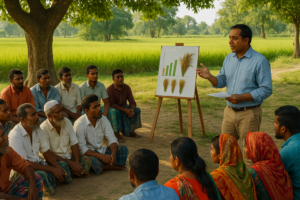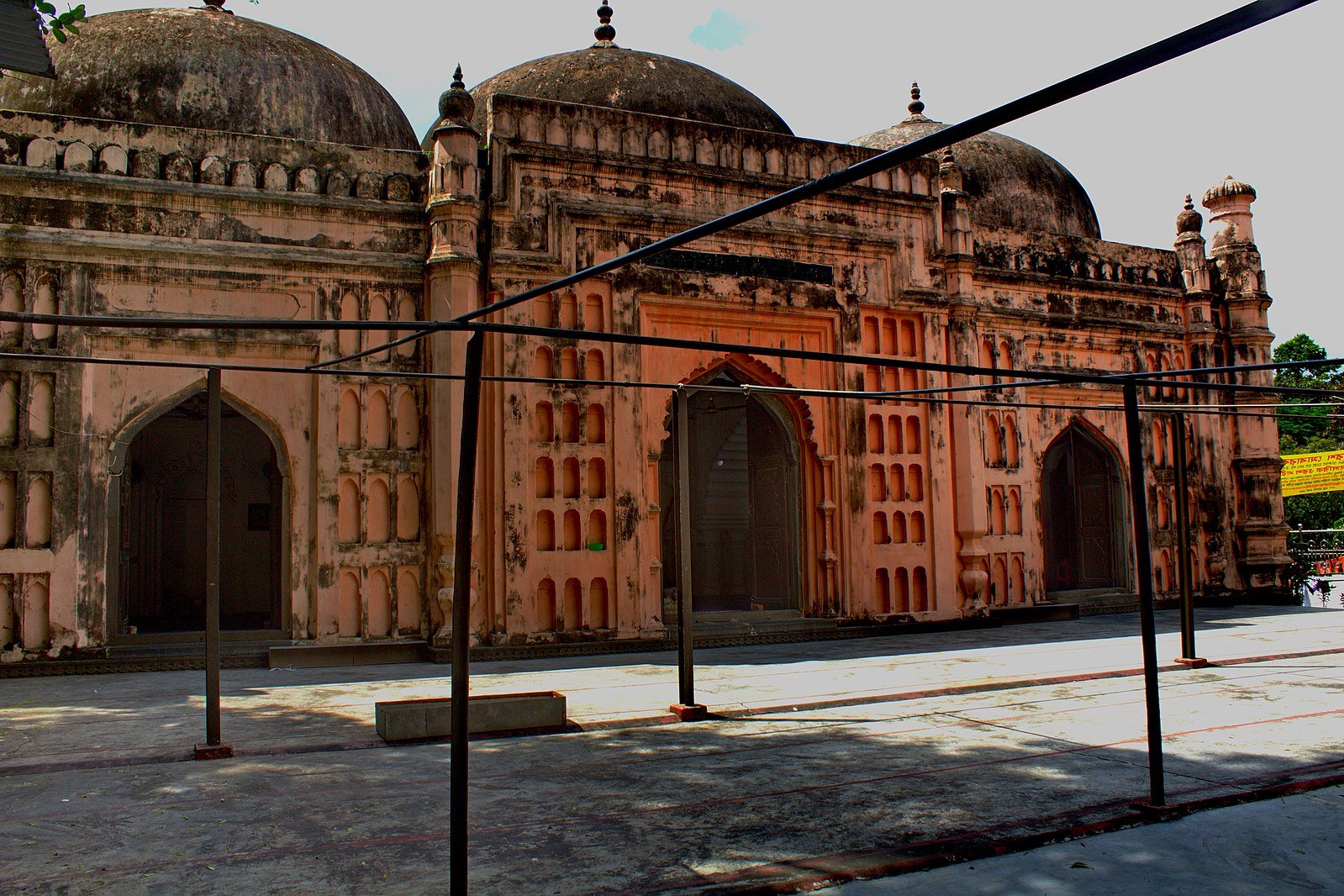Harvest Five Times a Year with Panchabrihi Rice
Bangladesh, a country where rice is the staple food, faces growing challenges from climate change, natural disasters, and food insecurity. In this critical time, a groundbreaking innovation known as Panchabrihi has emerged, thanks to the tireless efforts of eminent Bangladeshi scientist Dr. Abed Chowdhury. His discovery offers a beacon of hope: a method to cultivate five varieties of rice from a single plant throughout the year, dramatically boosting food security and transforming agricultural practices.
In this article, we dive deep into the story of Panchabrihi—its creation, scientific principles, impact on farmers, and the future it promises for Bangladesh and beyond.
What is Panchabrihi?
Panchabrihi—derived from Bengali words meaning five rices—is a revolutionary rice cultivation method that enables five harvests from a single rice tree without replanting. Traditionally, farmers have had to plant and harvest different rice varieties separately, spending time, effort, and money on each cycle. Dr. Chowdhury’s innovation changes this process entirely.
By blending thousands of rice varieties using non-chemical, scientific methods, he has developed a rice plant capable of yielding:
Thus, a single planting can now provide rice throughout different seasons—an unprecedented advancement in global agriculture.
Who is Dr. Abed Chowdhury?
Dr. Abed Chowdhury is not just any agricultural scientist; he is a world-renowned gene scientist with an impressive career. He has conducted research and taught at prestigious institutions such as:
- The U.S. National Institutes of Health
- The Massachusetts Institute of Technology (MIT)
- École Normale Supérieure in France
Known for innovations like colorful corn—which has potential cancer-fighting properties—Dr. Chowdhury has always strived to use science for human welfare rather than commercial gain. Panchabrihi is yet another testament to his commitment to bettering lives, particularly those of marginalized farmers.

How Panchabrihi Was Developed
The journey to Panchabrihi’s creation was anything but easy. Dr. Chowdhury:
- Conducted extensive field research in Sylhet, Bangladesh
- Partnered closely with local farmers to test and refine his methods
- Spent years crossbreeding nearly 3,000 rice varieties
- Applied non-chemical, natural scientific approaches, respecting the traditional connection between nature, religion, and science
Unlike laboratory-based, heavily chemical-dependent methods, Panchabrihi grew organically from the land and culture of Bangladesh.
The final breakthrough came when a single rice tree could be made to regenerate and adapt across different seasons, effectively acting like five different crops without being replanted.
Why Panchabrihi Matters
1. Food Security
Bangladesh’s growing population and vulnerability to floods, droughts, and cyclones make food security a national priority. Dr. Chowdhury estimates that Panchabrihi can secure Bangladesh’s rice needs for the next 50 years if widely adopted.
2. Reduced Costs for Farmers
Traditionally, farmers face huge expenses for:
- Seeds
- Labor for planting and replanting
- Water management
- Fertilizers and pesticides
Panchabrihi slashes these costs dramatically since one tree produces multiple harvests, cutting the need for repetitive planting.
3. Saves Time and Effort
For rural farmers, saving time is saving survival. By avoiding seasonal replanting, farmers can spend more time diversifying their income sources or focusing on other essential crops.
4. Adaptation to Climate Change
Panchabrihi’s multiple-rice system can withstand floods and droughts better because of its genetically diversified resilience, offering farmers a safety net in the face of worsening climate events.
Scientific Insights Behind Panchabrihi
Dr. Chowdhury’s technique taps into the plant’s regenerative abilities. After each harvest:
- New growth is stimulated from the same rootstock
- Rice varieties adapt to the upcoming season (boro, aman, or aush)
- No genetic modification (GMO) is involved—this is natural genetic mixing
Such sustainable agriculture minimizes soil degradation and promotes ecological balance, unlike intensive mono-cropping practices.
Panchabrihi Growth Cycle
- Sowing: Farmers plant Panchabrihi seeds like regular rice at the beginning of the season.
- First Growth Phase: The rice plants grow normally, reaching maturity just like traditional varieties.
- First Harvest: Farmers harvest the mature grains, but leave the plant base and roots intact.
- Regeneration Phase: Instead of dying, the plant regenerates new tillers (side shoots) from the same root system.
- Second Harvest: After a shorter growth period, the regenerated plant produces another crop of rice.
- Subsequent Harvests: This regrow-and-harvest cycle can happen up to five times in a single planting, drastically increasing total yield.
Commercialization? No—A Gift to Farmers
In today’s world, where patents and commercialization dominate innovation, Dr. Chowdhury took an extraordinary step: he refused to commercialize Panchabrihi.
At a seminar organized by the London Bangla Press Club, he publicly announced:
- Panchabrihi will be distributed free of cost to poor farmers
- His aim is to serve humanity, not profit from it
This approach restores faith in science being a tool for collective good, not just for corporate wealth.
Challenges Ahead
While Panchabrihi is revolutionary, some challenges must be addressed:
- Mass training of farmers to adapt to the new system
- Soil management education, since regenerative cropping requires careful attention
- Government support in providing seeds and technical advice
- Resistance from traditional agribusiness interests who might see it as a threat to their seed and fertilizer markets
Without robust policy backing and community involvement, even the most brilliant innovations can struggle to reach their potential.

Panchabrihi vs Traditional Rice Farming
Rice farming in Bangladesh has long been tied to seasonal cycles, limited to one or two harvests per year. Traditional methods are labor-intensive, water-heavy, and vulnerable to climate shocks. Enter Panchabrihi—a groundbreaking innovation by Dr. Abed Chowdhury—that enables five harvests from a single rice plant without replanting.
The difference is transformative: Panchabrihi reduces costs, boosts food security, and offers farmers a chance to break free from the uncertainties of traditional cultivation.
| Feature | Traditional Farming | Panchabrihi Farming |
|---|---|---|
| Number of Plantings | 2-3 times a year | 1 time for 5 harvests |
| Seed Cost | High | One-time cost |
| Labor Needed | High | Reduced significantly |
| Fertilizer and Pesticide Use | Heavy | Minimal to none |
| Climate Resilience | Moderate | High |
| Environmental Impact | Negative (due to chemicals) | Positive (organic process) |
Global Potential
Although Panchabrihi was born in Bangladesh, its implications are global. Many countries in South and Southeast Asia, as well as parts of Africa facing food crises, can benefit from adapting this method.
Institutions like:
- FAO (Food and Agriculture Organization)
- IRRI (International Rice Research Institute)
- World Bank agricultural initiatives
could potentially partner to replicate and scale up the Panchabrihi model in vulnerable regions worldwide.
Future Directions
To maximize Panchabrihi’s impact, the following steps are crucial:
- Government support: Official endorsement and resource allocation.
- Public awareness campaigns: Workshops, training videos, and pamphlets.
- Scientific studies: Publish research to validate results and encourage global adoption.
- Community leadership: Farmer cooperatives can help share knowledge rapidly.
- Export opportunities: Branded Bangladeshi rice grown sustainably could capture niche markets.
Future Outlook
Panchabrihi is more than just a farming technique—it is a symbol of innovation rooted in humanity. By merging ancient wisdom, natural science, and modern needs, Dr. Abed Chowdhury has gifted Bangladesh—and potentially the world—a roadmap to agricultural resilience, sustainability, and prosperity.
At a time when the world often feels divided and desperate for solutions, Panchabrihi stands as a shining example of how science, compassion, and cultural pride can change lives.
The fields of Bangladesh may now whisper a new story—one where a single seed plants the future.
If you’re interested in learning about Bangladesh’s growing role in international fertilizer production, including a significant new urea fertilizer factory being set up in Saudi Arabia, check out this article for more details: Bangladesh to Set Up Urea Fertilizer Factory in Saudi Arabia.








